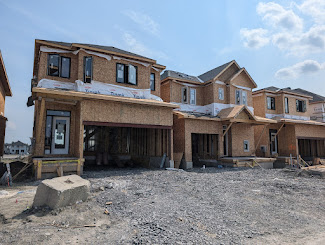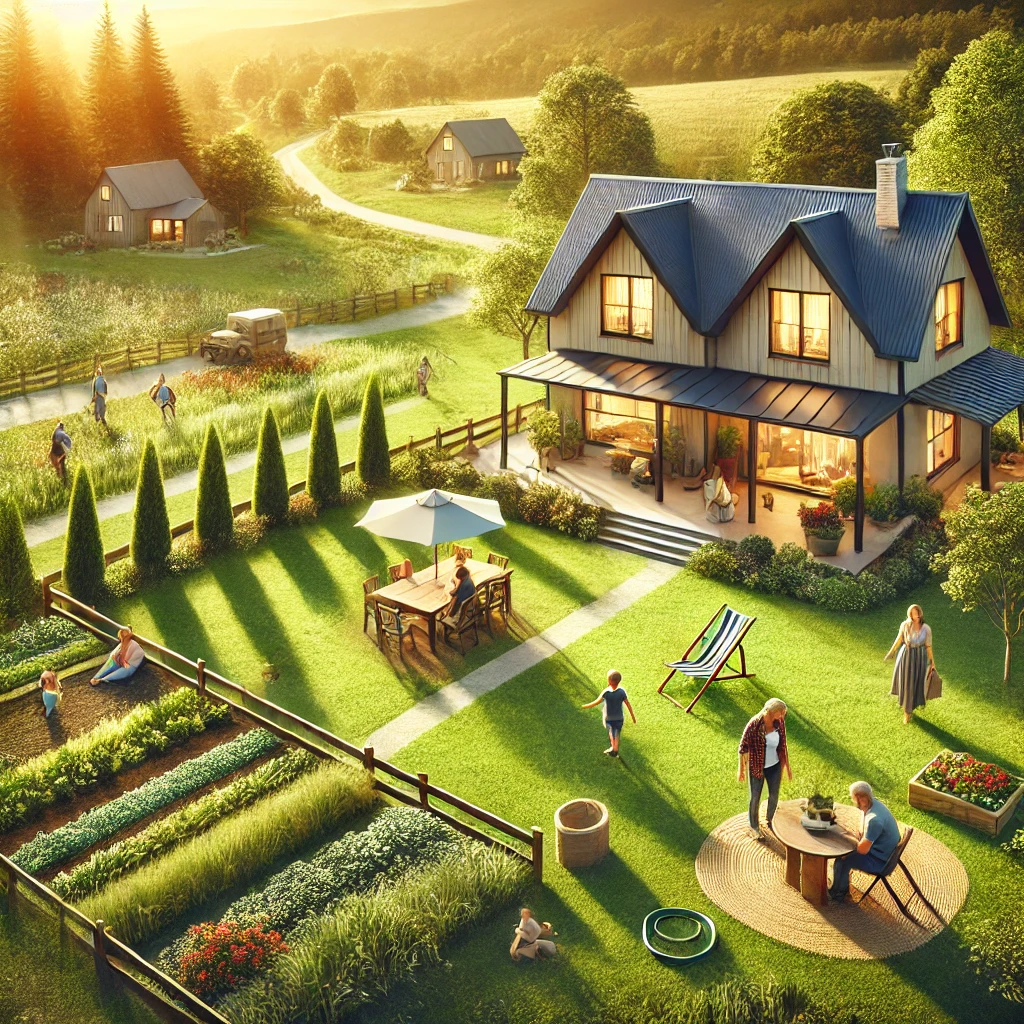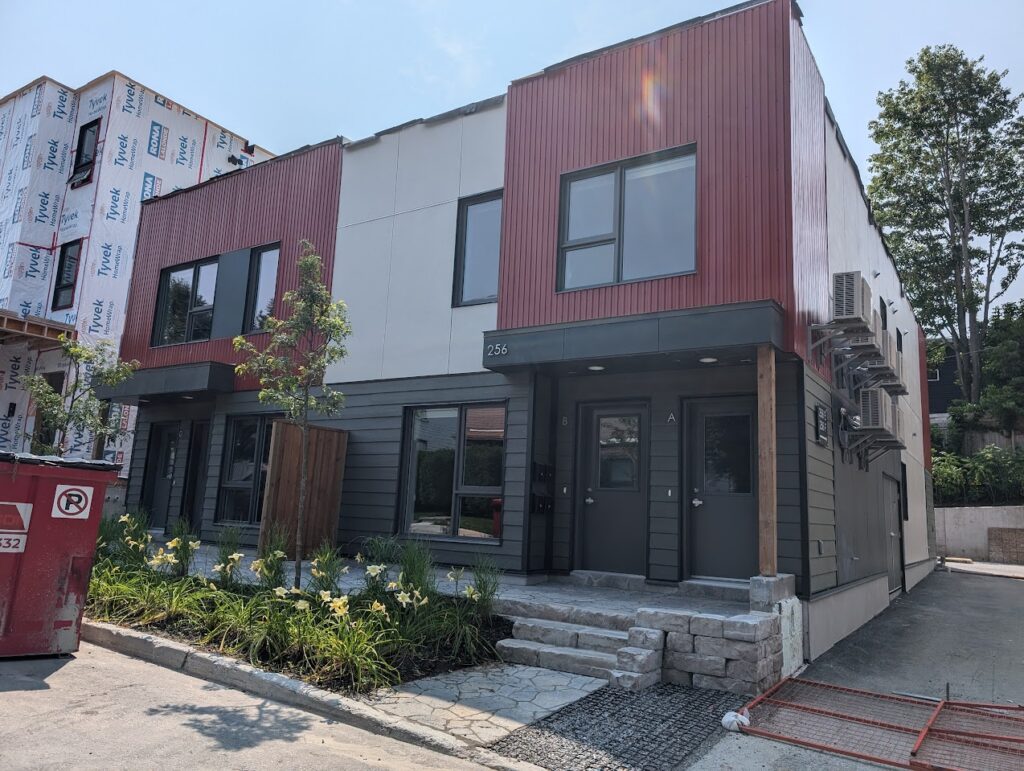The COVID-19 pandemic has reshaped countless aspects of our lives, and one of the most significant shifts has been in housing preferences across Canada. As the virus spread and lockdowns became a new norm, the way people view their living spaces transformed dramatically. The allure of bustling urban centers, once the epicenter of convenience and culture, began to fade as remote work, social distancing, and a desire for more space took precedence. Instead, many Canadians started to look toward the suburbs and even rural areas as attractive alternatives. This shift marks a profound change in the national housing landscape, with potential long-term effects on where and how people choose to live.
Urban Living: Pre-Pandemic Trends and Current Realities

Before the pandemic, urban centers were the beating heart of Canadian life. Cities like Toronto, Vancouver, and Montreal thrived as hubs of economic activity, cultural diversity, and social engagement. The appeal of urban living was undeniable — proximity to work, easy access to amenities, vibrant nightlife, and a sense of community were significant draws for individuals and families alike. High-rise condos, trendy apartments, and compact living spaces were the norm, reflecting a lifestyle centered around convenience and connectivity.
However, the onset of the pandemic in 2020 brought about an abrupt change in how people perceived urban living. As lockdowns confined millions to their homes, the drawbacks of dense city living became increasingly apparent. Small living spaces, once manageable or even desirable, began to feel cramped and stifling. The very factors that made cities appealing — bustling streets, crowded public spaces, and the convenience of mass transit — turned into sources of anxiety as the virus spread rapidly through urban areas.
Moreover, the rise of remote work dismantled one of the core reasons for city living: proximity to the workplace. With offices shifting to virtual environments, the need to live close to work diminished, freeing people to reconsider where they wanted to live. For many, this meant looking beyond the city limits, where larger homes, more outdoor space, and a quieter lifestyle beckoned.
The economic impact of the pandemic also played a role in shifting preferences. The cost of living in major urban centers, already high, became even harder to justify when the benefits of city life were curtailed by the pandemic. With restaurants, theaters, and cultural events on hold, the premium paid for living in the heart of the city seemed less worthwhile. This financial reassessment pushed many to explore more affordable options in the suburbs or even rural areas.
The pandemic didn’t completely erase the appeal of urban living, but it undeniably altered the landscape. While some remain committed to the energy and opportunities that cities offer, a significant number of Canadians have started to reconsider the balance between convenience and quality of life, setting the stage for the rise of suburban and rural living in the post-pandemic era.

The Appeal of Suburban and Rural Living
As the pandemic redefined daily life, the appeal of suburban and rural living grew significantly among Canadians. The shift from urban centers to these quieter, more spacious areas was driven by several key factors that resonated deeply with individuals and families across the country.
One of the most compelling reasons for this shift was the desire for more space. The pandemic emphasized the importance of having a comfortable living environment, particularly as homes transformed into multi-functional spaces, serving as offices, schools, and recreational areas. In suburban and rural areas, larger homes with additional rooms, home offices, and expansive yards became highly sought after. The ability to have a dedicated space for work, relaxation, and outdoor activities was a major draw, especially for those who felt confined in smaller urban apartments.
Affordability was another critical factor that made suburban and rural areas attractive. The cost of living in major cities like Toronto and Vancouver has always been a challenge, but the pandemic exacerbated financial concerns for many. With the economic uncertainty brought on by the pandemic, the prospect of owning a larger home at a lower cost in the suburbs or rural areas became increasingly appealing. Lower property prices, combined with historically low-interest rates, made homeownership more attainable outside of urban centers.
The lifestyle changes prompted by the pandemic also played a significant role. With social distancing measures in place and many cultural and entertainment venues closed, the perks of city life diminished. In contrast, suburban and rural living offered a slower pace of life, closer proximity to nature, and a stronger sense of community. Access to outdoor spaces, such as parks, trails, and lakes, became a priority for many Canadians seeking a healthier, more balanced lifestyle.
Furthermore, the rise of remote work allowed individuals to consider living farther from their place of employment. Without the need to commute daily, the geographical boundaries that once tied people to cities loosened. This newfound flexibility enabled many to explore living in areas that previously seemed impractical due to distance.
Lastly, the pandemic heightened the value of safety and security, both in terms of health and general well-being. Suburban and rural areas, with their lower population densities and more controlled environments, were perceived as safer havens compared to crowded urban settings. This sense of security, coupled with the aforementioned benefits, made the suburbs and rural areas increasingly attractive to a growing number of Canadians.
As a result, the once clear divide between urban and suburban/rural living began to blur, with many people opting for the latter as they re-evaluated their priorities in light of the pandemic.
Case Studies: Canadian Cities and Suburbs Seeing the Biggest Shifts
The shift from urban centers to suburban and rural living has been particularly evident in certain Canadian cities and their surrounding suburbs. These regions have experienced notable changes in population distribution and housing demand, reflecting the broader trends observed across the country.
Toronto and the Greater Toronto Area (GTA):
Toronto, Canada’s largest city, has long been a magnet for both domestic and international migrants, drawn to its economic opportunities and vibrant cultural scene. However, the pandemic triggered a significant migration from the city to its surrounding suburbs in the Greater Toronto Area (GTA). Suburbs like Mississauga, Brampton, and Vaughan saw a surge in interest as families and individuals sought more space and affordable housing options. This trend was particularly pronounced among young families who desired larger homes with backyards and proximity to schools and parks, which were more readily available in the suburbs compared to the city’s dense core.

Vancouver and the Fraser Valley:
Vancouver’s high cost of living has always been a challenge, but the pandemic intensified the exodus from the city to more affordable regions like the Fraser Valley. Suburban communities such as Surrey, Langley, and Abbotsford experienced a boom in real estate activity as people moved away from the city’s expensive, compact housing in search of more spacious and affordable alternatives. The appeal of the Fraser Valley, with its scenic landscapes and access to outdoor activities, has drawn many Vancouverites looking for a better quality of life at a lower cost.
Montreal and the North Shore/South Shore:
Montreal also saw a noticeable shift in housing preferences during the pandemic. The city’s North Shore and South Shore suburbs, including Laval, Longueuil, and Brossard, became increasingly popular among residents looking to escape the more crowded and confined urban environment. These areas offered the advantages of suburban living, such as larger properties, quieter neighborhoods, and a slower pace of life, while still being within a manageable distance from the city center.
Calgary and Airdrie:
In Alberta, Calgary witnessed a trend similar to other major cities, with many residents opting to move to nearby smaller cities and towns. Airdrie, just north of Calgary, became a favored destination for those looking to benefit from lower housing costs and more space while still maintaining close ties to Calgary for work or social reasons. The pandemic highlighted the advantages of living in smaller communities like Airdrie, where residents could enjoy a more relaxed lifestyle without sacrificing the conveniences of urban proximity.
Halifax and Surrounding Rural Areas:
Even in smaller urban centers like Halifax, the pandemic prompted a shift towards rural living. Nova Scotians began exploring the benefits of living in the province’s more rural areas, such as the Annapolis Valley or the South Shore. The draw of larger properties, lower costs, and a close-knit community feel resonated with those looking to escape the relative bustle of Halifax while still remaining within reach of the city’s amenities.
These case studies highlight the widespread nature of the pandemic-driven housing shift across Canada. As people reassessed their living situations, the appeal of suburban and rural areas grew stronger, leading to significant demographic and housing market changes that continue to shape the country’s real estate landscape.

Future Outlook: Will Suburban and Rural Preferences Persist?
As Canada continues to emerge from the pandemic, the big question remains: will the shift toward suburban and rural living endure, or will urban centers regain their former appeal? The answer to this question is complex and will likely depend on several factors that continue to evolve.
One of the most significant factors influencing future housing trends is the permanence of remote work. During the pandemic, many companies adopted remote or hybrid work models, which allowed employees the flexibility to live farther from their offices. If remote work remains a widespread practice, the need to live close to urban employment centers may diminish further, sustaining the appeal of suburban and rural living. However, if companies push for a return to in-office work, the convenience of city living may once again draw people back to urban centers.
The economic landscape will also play a critical role in shaping future housing preferences. The affordability of suburban and rural properties compared to urban real estate remains a strong selling point, especially as interest rates fluctuate and inflation impacts household budgets. If urban housing prices continue to rise, the trend toward seeking more affordable and spacious homes outside of cities could persist. On the other hand, if urban housing markets stabilize or decline, we may see a resurgence in demand for city living.
Lifestyle preferences that emerged during the pandemic may also continue to influence housing decisions. The desire for more space, access to nature, and a quieter environment has led many to reconsider the high-paced, densely populated city life. As people re-evaluate what they value most in their living situations, suburban and rural areas may continue to attract those seeking a slower, more balanced lifestyle.
However, it’s important to recognize that cities have unique advantages that could drive a future resurgence. Urban centers offer unparalleled cultural, social, and professional opportunities, which are difficult to replicate in suburban and rural areas. As pandemic-related restrictions ease and cities begin to reopen fully, the vibrancy and convenience of urban living may once again become irresistible, particularly for younger generations and those drawn to the energy and diversity of city life.

Finally, government policies and infrastructure developments will be key in shaping the future of Canadian housing preferences. Investments in public transportation, housing affordability initiatives, and urban revitalization projects could make cities more attractive and accessible, potentially reversing some of the suburban migration trends. Similarly, improvements in suburban and rural infrastructure, such as better internet connectivity and transportation links, could further enhance the appeal of living outside urban centers.
In conclusion, while the pandemic has undeniably shifted Canadian housing preferences toward suburban and rural living, the future is uncertain. Much will depend on how remote work evolves, economic conditions, lifestyle choices, and government policies. Whether suburban and rural preferences will persist or if urban centers will reclaim their dominance remains to be seen, but what is clear is that the pandemic has forever changed the way Canadians think about where they live.
The COVID-19 pandemic has had a profound impact on how Canadians view their living environments, prompting many to reconsider the benefits of urban life in favor of the space and tranquility offered by suburban and rural areas. As remote work became the norm and the desire for a more balanced lifestyle grew, suburban and rural living emerged as increasingly attractive options. While the long-term effects of this shift remain uncertain, it is clear that the pandemic has reshaped the housing landscape in Canada, challenging traditional notions of where and how people choose to live.
Whether the trend towards suburban and rural living will persist depends on several evolving factors, including the future of remote work, economic conditions, and personal lifestyle preferences. As cities begin to recover and reopen, the unique advantages of urban living may once again come to the forefront, drawing people back to the bustling centers they once called home. However, the pandemic has undeniably broadened the scope of what Canadians consider an ideal place to live, potentially leading to a more diverse and distributed population across the country.
In this new post-pandemic reality, the choice between urban, suburban, and rural living is more nuanced than ever. Canadians are weighing the pros and cons of each option, seeking the right balance that meets their individual needs and aspirations. As we move forward, the lessons learned during the pandemic will continue to influence housing preferences, shaping the future of living in Canada for years to come.
